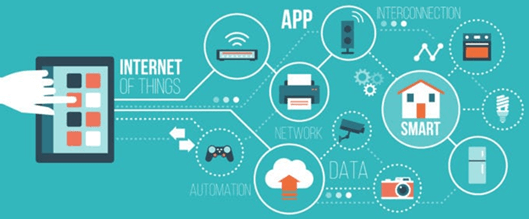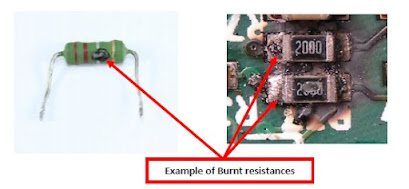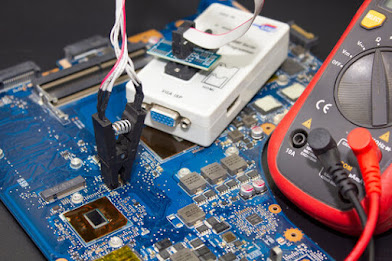Introduction to Internet of Things (IoT Basics)
What is IoT (Internet of Things)?
Internet of Things (IoT) is a network of physical objects or people called “things” that are embedded with software, electronics, network, and sensors that allows these objects to collect and exchange data. The goal of IoT is to extend to internet connectivity from standard devices like computer, mobile, tablet to relatively dumb devices like a toaster.
IoT makes virtually everything “smart,” by improving aspects of our life
with the power of data collection, AI algorithm, and networks. The
thing in IoT can also be a person with a diabetes monitor implant, an
animal with tracking devices, etc. This IoT tutorial for beginners
covers all the Basics of IoT.
In this IoT tutorial, we will learn various IoT concepts like IoT basics, IoT introduction, fundamentals of IoT, etc.
History of IoT
- 1970- The actual idea of connected devices was proposed
- 1990- John Romkey created a toaster which could be turned on/off over the Internet
- 1995- Siemens introduced the first cellular module built for M2M
- 1999- The term “Internet of Things” was used by Kevin Ashton during his work at P&G which became widely accepted
- 2004 – The term was mentioned in famous publications like the Guardian, Boston Globe, and Scientific American
- 2005-UN’s International Telecommunications Union (ITU) published its first report on this topic.
- 2008- The Internet of Things was born
- 2011- Gartner, the market research company, include “The Internet of Things” technology in their research
How IoT works?

The entire IoT process starts with the devices themselves like smartphones, smartwatches, electronic appliances like TV, Washing Machine which helps you to communicate with the IoT platform.
Now in this IoT tutorial, we will learn about four fundamental components of an IoT system:
1) Sensors/Devices: Sensors or devices are a key component that helps you to collect live data from the surrounding environment. All this data may have various levels of complexities. It could be a simple temperature monitoring sensor, or it may be in the form of the video feed.
A device may have various types of sensors which performs multiple tasks apart from sensing. Example, A mobile phone is a device which has multiple sensors like GPS, camera but your smartphone is not able to sense these things.
2) Connectivity: All the collected data is sent to a cloud infrastructure. The sensors should be connected to the cloud using various mediums of communications. These communication mediums include mobile or satellite networks, Bluetooth, WI-FI, WAN, etc.
3) Data Processing: Once that data is collected, and it gets to the cloud, the software performs processing on the gathered data. This process can be just checking the temperature, reading on devices like AC or heaters. However, it can sometimes also be very complex like identifying objects, using computer vision on video.
4)User Interface: The information needs to be available to the end-user in some way which can be achieved by triggering alarms on their phones or sending them notification through email or text message. The user sometimes might need an interface which actively checks their IoT system. For example, the user has a camera installed in his home. He wants to access video recording and all the feeds with the help of a web server.
However, it’s not always one-way communication. Depending on the IoT application and complexity of the system, the user may also be able to perform an action which may create cascading effects.
For example, if a user detects any changes in the temperature of the refrigerator, with the help of IoT technology the user should able to adjust the temperature with the help of their mobile phone.
IoT Applications
Now in this IoT tutorial, we will see various IoT applications:

IoT solutions are widely used in numerous companies across industries. Some most common IoT applications are given below:
| Application type | Description |
|---|---|
| Smart Thermostats | Helps you to save resource on heating bills by knowing your usage patterns. |
| Connected Cars | IoT helps automobile companies handle billing, parking, insurance, and other related stuff automatically. |
| Activity Trackers | Helps you to capture heart rate pattern, calorie expenditure, activity levels, and skin temperature on your wrist. |
| Smart Outlets | Remotely turn any device on or off. It also allows you to track a device’s energy level and get custom notifications directly into your smartphone. |
| Parking Sensors | IoT technology helps users to identify the real-time availability of parking spaces on their phone. |
| Connect Health | The concept of a connected health care system facilitates real-time health monitoring and patient care. It helps in improved medical decision-making based on patient data. |
| Smart City | Smart city offers all types of use cases which include traffic management to water distribution, waste management, etc. |
| Smart home | Smart home encapsulates the connectivity inside your homes. It includes smoke detectors, home appliances, light bulbs, windows, door locks, etc. |
| Smart supply chain | Helps you in real time tracking of goods while they are on the road, or getting suppliers to exchange inventory information. |
Challenges of Internet of Things (IoT)
At present IoT is faced with many challenges, such as:
- Insufficient testing and updating
- Concern regarding data security and privacy
- Software complexity
- Data volumes and interpretation
- Integration with AI and automation
- Devices require a constant power supply which is difficult
- Interaction and short-range communication
Advantages of IoT

Key benefits of IoT technology are as follows:
- Technical Optimization: IoT technology helps a lot in improving technologies and making them better. Example, with IoT, a manufacturer is able to collect data from various car sensors. The manufacturer analyzes them to improve its design and make them more efficient.
- Improved Data Collection: Traditional data collection has its limitations and its design for passive use. IoT facilitates immediate action on data.
- Reduced Waste: IoT offers real-time information leading to effective decision making & management of resources. For example, if a manufacturer finds an issue in multiple car engines, he can track the manufacturing plan of those engines and solves this issue with the manufacturing belt.
- Improved Customer Engagement: IoT allows you to improve customer experience by detecting problems and improving the process.
Disadvantages IoT
Now, let’s see some of the disadvantages of IoT in this Internet of Things tutorial:
- Security: IoT technology creates an ecosystem of connected devices. However, during this process, the system may offer little authentication control despite sufficient security measures.
- Privacy: The use of IoT, exposes a substantial amount of personal data, in extreme detail, without the user’s active participation. This creates lots of privacy issues.
- Flexibility: There is a huge concern regarding the flexibility of an IoT system. It is mainly regarding integrating with another system as there are many diverse systems involved in the process.
- Complexity: The design of the IoT system is also quite complicated. Moreover, it’s deployment and maintenance also not very easy.
- Compliance: IoT has its own set of rules and regulations. However, because of its complexity, the task of compliance is quite challenging.
IoT Best Practices
We will now learn about Best practices for IoT in this Internet of Things tutorial.
- Design products for reliability and security
- Use strong authentication and security protocols
- Disable non-essential services
- Ensure Internet-managed, and IoT management hubs & services are secured
- Energy efficient algorithms should be designed for the system to be active longer.
Summary
- Introduction to Internet of Things (IoT): The Internet of Things (IoT) is a network of physical objects or people called “things” that are embedded with software, electronics, network, and sensors which allows these objects to collect and exchange data.
- The actual idea of connected devices was proposed in 1970
- Four Key components of IoT framework are 1) Sensors/Devices, 2) Connectivity, 3) Data Processing, 4) User Interface
- Various applications of IoT are Smart Thermostats, Connected Cars, Activity Trackers, Smart Outlets, Connect Health, etc.
- Technical Optimization, Improve Data Collection, Reduced Waste, Improved Customer Engagement are key benefits of IoT
- Security, Privacy, Complexity, Compliance, are key challenges of IoT.







Comments
Post a Comment